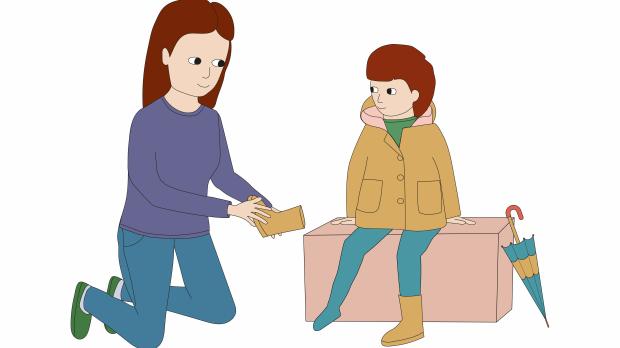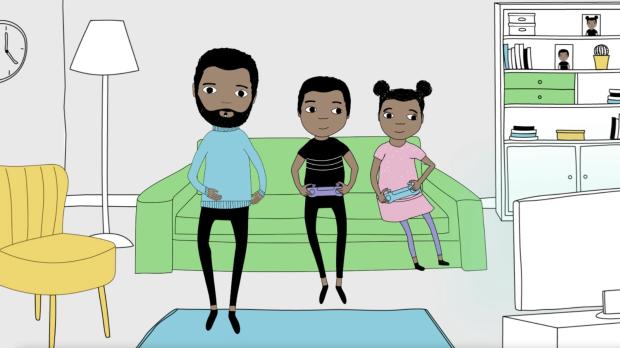Taking the time to understand more about child sexual abuse helps us as adults to know how we can support children and young people.
It’s important to talk about sexual abuse, recognise it and support the recovery of young people who’ve experience it. We know that this is a difficult and challenging subject for parents and carers but knowing more means you can better support children. These are the six things about child sexual abuse that our experts want you to know.
1. Abuse is never the fault or responsibility of the child
People who harm often use their position of power to abuse children. A child should never feel that they are to blame for this.
Children who’ve experienced abuse may feel guilt, confusion and shame. They might even feel responsible for how this abuse, including talking about it, affects their family. It is our responsibility to help children to understand it's not their fault, help them to recover and support parents at one of the most difficult times in their lives.
2. Children won't always understand abuse - and shouldn’t be expected to
Children might find it difficult to identify abuse if it happens to them. They might not even know that what’s happened is wrong. This can be because of their age, development, maturity or lack of appropriate relationships and sex education.
Children are often manipulated by the person harming them into believing the sexual abuse is normal, a game or that it’s a secret. This is why it’s vital that trusted adults are able to talk to children about worries they might have, to better understand how children may be harmed and to be there when children and young people need someone to talk to.
3. All children are at risk of abuse
Abuse happens in many different places and spaces including online and in people’s homes. All children are at risk of abuse by nature of their age, lack of power and status in society, however some children are more at risk.
For example, we know from our experience and research that children with additional needs or disabilities, children in care, LGBTQ+ children or children under the age of 10 can be at increased risk.
Some children are less likely to be identified as victims of sexual abuse and gain the support they need. Research shows that boys and disabled children face several barriers to disclosing abuse (The Independent Inquiry into Child Sexual Abuse, 2022). Children from African, Asian or Caribbean heritage and other minority communities may also face obstacles to disclosure (The Barnardo's hosted Centre of expertise on child sexual abuse, 2021).
4. Adults from all backgrounds might sexually abuse children
How we view sexual abuse, and what we may understand as sexual abuse, changes over time and can be influenced by what we see and hear in the media. It’s important to remember though, that adults from all kinds of backgrounds might sexually abuse children (Home Office, 2020). We can’t necessarily identify someone who might be or is abusing children from what they look like. Research by the Home Office found that the ethnicity of child sexual exploitation offenders is in line with the population of the UK. Child sexual abuse is most often carried out by individuals known to the child, including family members.
It can be especially hard to think about people we know or people within our own families being capable of abuse. The important thing is to believe children if they tell us that someone is harming them, and to be proactive in protecting children from harms.
You can read more about trends in the statistics and data on child sexual abuse from the Centre of expertise on child sexual abuse.
5. Sexual abuse and exploitation can also happen online
Children and young people aren’t only groomed or exploited in person but also online (Internet Watch Foundation, 2021). Those who harm children can use online gaming, social media, live-streaming or online chats to form relationships with children.
Online abuse and exploitation can include coercing children to send images of themselves. Abuse and exploitation can often move offline too, with those who harm children encouraging the child to meet in person. This has particularly increased since the COVID-19 pandemic, with children spending more time online (Internet Watch Foundation, 2023).
Read our guides to online safety for more information to keep children and young people safe online.
6. We don’t know how many children are sexually abused
Research and evidence tells us that at least 15% of girls and 5% of boys in England and Wales experience sexual abuse before their 16th birthday (Centre of expertise on child sexual abuse, 2021). While this is distressing to consider, we also know that we do not have the whole picture: the level of child sexual abuse that is self-reported in surveys is much higher than the level recorded by agencies. That means that most children who are experiencing child sexual abuse, as many as seven out of eight children, don’t come to the attention of the police or local authorities.
This must change. All children affected by abuse should feel safe and get the support they need.
What can you do to help?
As a society we must talk more openly about these issues to ensure people are able to prevent and spot abuse, and help children to feel comfortable to talk to adults about it.
Read our guide on how to talk to children and young people about their safety.
How to talk to a child about their safety
Read our tips from experts for having positive conversations with your child about concerns you have for their safety and wellbeing.
What is child sexual abuse and exploitation?
Learn more about what child sexual abuse and exploitation is and how you can help keep children and young people safe.
What the experts know about child sexual abuse
Learn more about what the latest research tells us about child sexual abuse and exploitation, from the experts.



